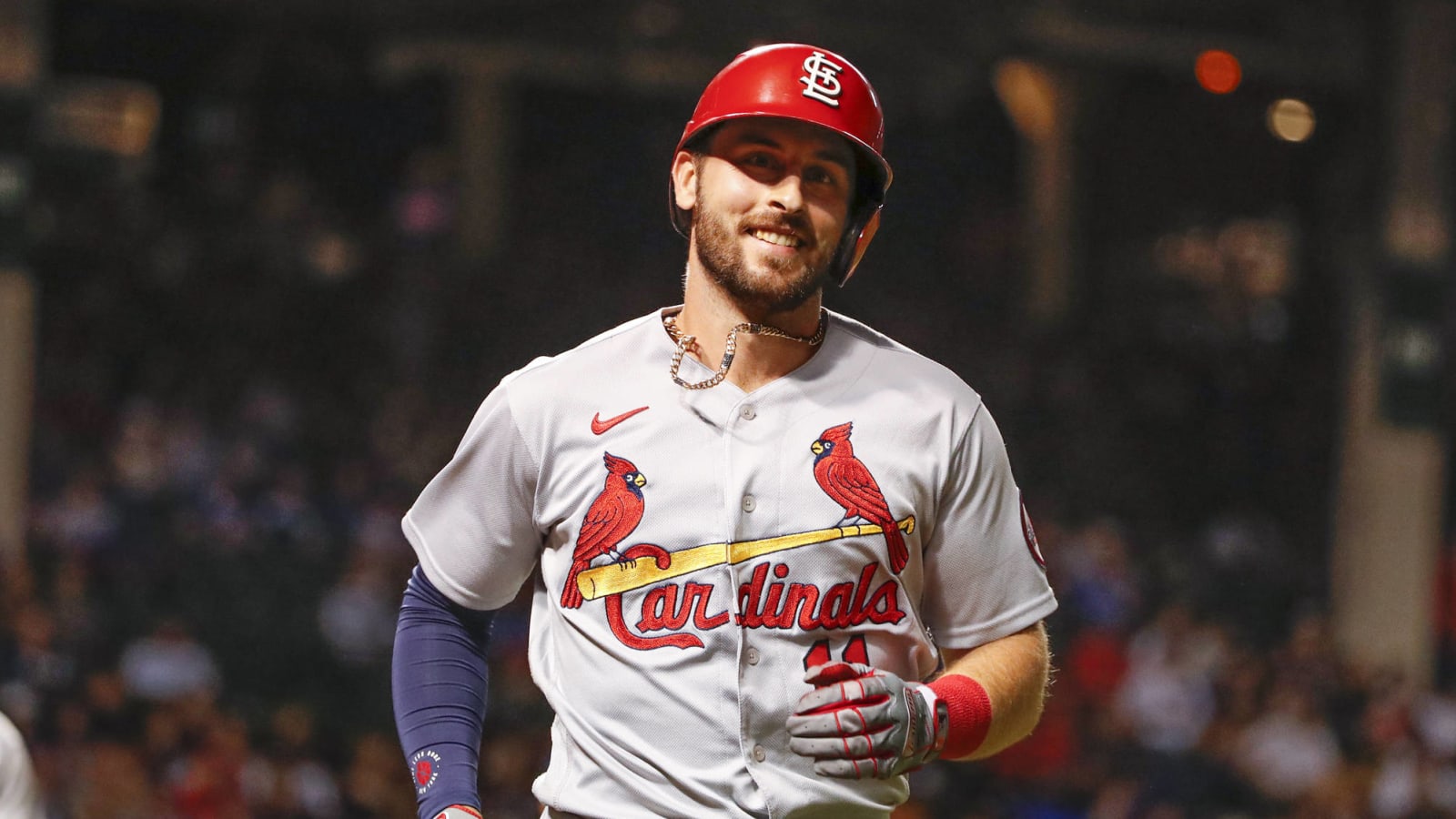
One of the biggest decisions for the Cardinals this winter is how to handle the shortstop position. That hasn’t been the case in a while. Paul DeJong had a great rookie season in 2017, and he’s been the Cards’ Opening Day shortstop for each of the four seasons since.
Going into 2022, it no longer seems to be DeJong’s job. That rookie season was propped up by a .349 batting average on balls in play that DeJong never seemed likely to sustain, but he was a solid hitter over the next couple years. Coupled with high-end defensive metrics, he was still a highly valuable player. DeJong’s bat has taken another step down over the last two years, however, and that seemingly puts his future with the organization in question.
Since the start of 2020, DeJong has tallied 576 plate appearances, nearly the equivalent of a typical season. He’s hit just .213/.295/.378, a mark that puts him 14 percentage points below the league average by measure of wRC+. DeJong still brings some power upside, popping 22 home runs with a .165 ISO (slugging minus batting average) that’s right around average. He has struck out in an elevated 26.6% of his trips to the plate, however. Paired with a very low .254 BABIP, that has led DeJong to post one of the lower batting averages and on-base marks among regular players.
DeJong is still generally effective at barreling balls up, but he’s also had far too many wasted plate appearances. He’s an extreme fly-ball hitter, which can be a bit of a double-edged sword. Hitting the ball in the air gives a player plenty of opportunities to do damage, but weakly hit fly balls aren’t especially useful. DeJong has had his share of softly hit balls in the air, with a 90.9 mph average exit velocity on air balls that ranks in the 42nd percentile leaguewide (minimum 1,000 pitches seen). That middle-of-the-road batted ball quality has come as DeJong’s contact rate has dropped a few percentage points over the past two seasons, falling from roughly league average to a bit below.
While DeJong hasn’t been an especially productive hitter in recent seasons, he hasn’t been without value. Defensive metrics have still pegged him as a solid or better defender. Over the past two seasons, DeJong has rated as six runs above average at shortstop by DRS, while Statcast has him at two plays above average. Even average play at shortstop is valuable, and DeJong is probably at least a tick above par defensively.
Because of that defensive acumen, DeJong has been valued at around two wins above replacement since the start of 2020 by both FanGraphs and Baseball Reference. That’s roughly league average for the amount he has played. So even with his bat going backward, DeJong is still a capable player who is just two years removed from an All-Star berth. He’d be an upgrade over some teams’ current shortstop situations.
Speculatively speaking, the Yankees, Phillies, Nationals, Angels, Rangers, A’s, Astros, Tigers and Twins are among the teams that might be in the shortstop market this winter. With a star-studded crop of free-agent shortstops, DeJong won’t be priority No. 1 for any of those clubs. They can’t all land high-end free agent options, however, and some could view DeJong as a reasonable fallback option.
In March 2018, DeJong and the Cardinals agreed on a contract extension, the guaranteed portion of which runs through 2023. He’ll make $6 million next season and $9 million the following year, and he’s guaranteed at least a $2 million buyout on a 2024 club option valued at $12.5 million. The contract also contains another club option covering 2025. Considering DeJong’s offensive struggles the past couple seasons, that deal no longer looks like a massive bargain. But it’s certainly not an outlandish detriment to a team’s finances either, and the two options give a potential acquiring team some upside if DeJong manages to turn things around at the dish.
That all leads to an interesting offseason decision for the St. Louis front office. DeJong’s 2022 salary isn’t outlandish, but the Cardinals might want to look into the top shortstops who are available. Alternatively, they could trade DeJong and rely on the player who became the de facto shortstop down the stretch this past season: Edmundo Sosa.
Sosa has long been viewed by public prospect evaluators as a future glove-first utilityman. He outperformed those expectations as a rookie, however, hitting .271/.346/.389 with six homers in 326 plate appearances. Sosa didn’t walk or hit for much power, but his aggressive approach helped keep his strikeouts low as well.
Turning shortstop over to Sosa based on half a season’s worth of work would be a risk, but he did enough down the stretch to seemingly surpass DeJong on the organizational depth chart. It’d be defensible to give Sosa a chance to seize the job, particularly considering this regime’s solid track record in developing position players who overperform their general prospect expectations.
How to handle the shortstop position going into 2022 is a key question for president of baseball operations John Mozeliak, GM Mike Girsch and the rest of the front office. That’s unfamiliar territory in St. Louis, but DeJong’s recent drop-off at the dish makes it possible he could wind up on the move in the coming months.
More must-reads:
- Padres to interview Mike Shildt for managerial opening this weekend
- Sorting out the 40 man roster
- The 'St. Louis Cardinals to throw a no-hitter' quiz
Breaking News
Customize Your Newsletter
 +
+
Get the latest news and rumors, customized to your favorite sports and teams. Emailed daily. Always free!

